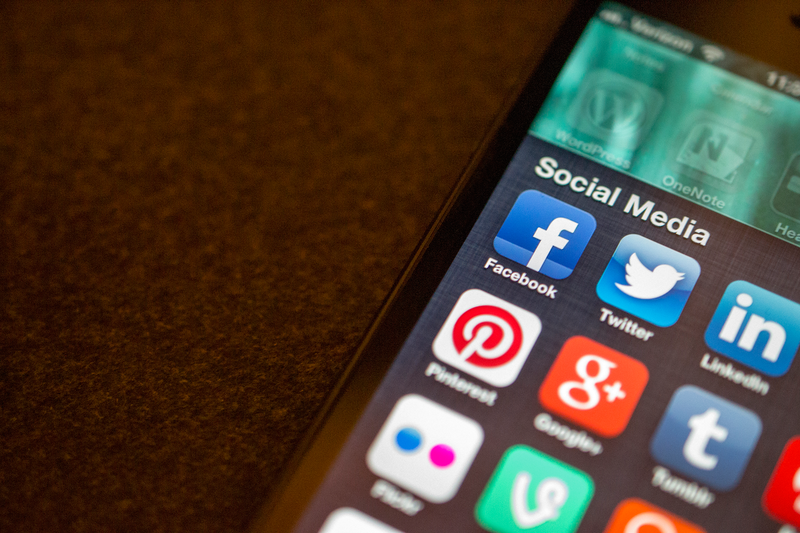The Paradox of Parasocial Relationships
While the term ‘parasocial relationship’ was coined in 1956, it has recently received a massive surge in popularity. But what exactly is a parasocial relationship? And how do we recognize them?
Jason Howie, CC BY 2.0
Social media has become a prevalent part of our every day lives. It facilitates easier communication with people from all over the world, including those with whom you wouldn’t regularly talk. However, with this rise in social media use also came the rise in parasocial relationships, compounded by the COVID-19 pandemic.
Perfect Blue by Satoshi Kon, a Japanese animated film released in 1998, tells the story of Mima Kirigoe, a long term member of the J-pop group CHAM!, who quits to pursue a career as an actress. She sheds the innocent, angelic guise that she cultivated in the group and embraces a new rebellious ‘bad girl’ persona. However, little does she know the problems that this decision precipitates, falling prey to a stalker and seeing hallucination of her former self at every turn, clad in her ex-CHAM! uniform.
The whole movie is disturbing, but one scene stands out in particular: at around the 50-minute mark, Mima’s stalker, known as Me-Mania, sits in a dim room, with only the glare of his computer screen to provide any sort of light. The floor is littered with bags, paper, and magazines, with the scarce pieces of furniture pushing up against the wall. Shelves hold a seemingly infinite supply of audio equipment: stereos, VHS tapes, and recorders. Multiple computers frame his body in a triangular formation, and the screens are covered with post-it notes.
Plastered on the walls are photos of Mima arranged in a horrific collage — Mima in her CHAM! outfit, Mima posing for a magazine, Mima, Mima, Mima. As he sits in front of his computer, he imagines the photos talking to him, promising that he was the only person in the world she could trust. A hallucination of Mima even hugs him, affirming that he knows Mima best out of anyone in the world, and Mima would never pursue this new career without outside intervention.
Me-Mania’s relationship with Mima is a parasocial relationship taken to a horrific extreme, growing from mere adoration to full blown obsession. If rated based on the graph depicting levels of parasocial relationships by Giles & Maltby in 2006, he is located all the way down in the red, snugly fitting into the category of Borderline Pathological.
But what even are parasocial relationships? A parasocial relationship is a one-sided relationship in which one party invests a significant amount of time and energy into the relationship, contrasted by the other person who is not aware of their existence. The term “parasocial relationship” was coined by Donald Horton and Richard Wohl in their 1956 study titled “Mass Communication and Para-social Interaction: Observations on Intimacy at a Distance”. Wohl and Horton sought to research the connection between a television personality, usually an actor, and the audience. They recorded a peculiar phenomenon. Due to the format of mass media, an illusion of false intimacy arose within viewers. Based on the scripted behaviors and interactions on-screen, the spectators begin to feel as though they know the person themselves on a deeper level than expected.
This became known as the ‘persona,’ a term used to describe the merging of the entertainer’s false identity with who they truly are as a person. Thus, Horton and Wohl came up with the term parasocial relationship, a one sided relationship, where one extends a tremendous amount of interest and time towards another, more distant figure, who is unaware of the person’s existence.
The persona can be viewed in numerous ways — as a friend, a role model, or an advisor. This is due to the route nature of the persona’s characterization, where nothing substantial ever changes. Their personality stays the same, offering up a confidante who has virtually no flaws. It’s easy to look up to them, creating an idealized figure of them in your mind. Due to the perceived intimacy, the persona adapts to whatever a viewer needs in their life. They are a comforting figure in a world full of constant changes.
There are three levels of parasocial relationships. The hierarchy, created by the researchers Giles and Maltby in 2006, was originally posited as a way to rate celebrity worship, dividing it into three stages.
Stage 1, Social, is the least intense of the three. This stage posits that most people have had a form of parasocial relationship before in their life, where celebrities are seen as sources of entertainment and topics to gossip about.
It then progresses on to Stage 2, Personal, where the attachment towards the persona increases, assuming the viewer is now somewhat obsessed with their daily life.
The most intense of the relationships is Stage 3, aptly named Borderline Pathological. In this stage, the interest expressed in Stage 1 gets taken to the extreme, with behaviors such as stalking most likely to occur. A person who is in this stage is likely to believe that if the object of their obsession ever met them, their feelings of love and admiration would be reciprocated.
With the creation of new technologies and the passage of time, a change occurred in how parasocial relationships are developed. The rise of social media diminished television’s role in developing parasocial relationships by providing platforms that provide an even more intimate view of the persona.
Simply tapping an icon allows you to witness the last few hours of a person’s activity, leading to easier facilitation of parasocial interactions, defined as instances in which you feel included in interactions that you would not normally be privy to. According to Oxford Reference, the people most vulnerable to this type of interaction are not people who casually observe an online figure, but rather that “regular viewers are more likely to adopt the preferred role.”
Contrary to popular belief, parasocial relationships are not inherently negative. They can often be stand-ins for relationships that a person lacks in real life, allowing connections without the fear of retribution or being disappointed. According to a study published by the University of Buffalo in 2008, parasocial relationships “can have self-enhancing benefits for people with low self-esteem, benefits they do not receive in real relationships,” which seems to be the chief reason why individuals with low-self esteem and social anxiety are attracted to these relationships.

(Dominick Dusseault, CC BY-SA 2.0 <https://creativecommons.org/licenses/by-sa/2.0>, via Wikimedia Commons)
Keep in mind, however, that parasocial relationships still have negative effects. Due to how self-gratifying they are, these relationships can serve as replacements for more meaningful connections in real life.
Nowhere have the effects of parasocial relationships been more prevalent than on the internet. The prevalence and effects of parasocial relationships have been unprecedented in regard to the internet. Over the past few years, the worldwide COVID-19 pandemic confined many individuals to their homes, making socializing in person nearly nonexistent, especially in the months following the start of the pandemic in March 2020.
Consequently, many people turned to social media in order to keep in touch with friends and fulfill their needs for social interaction. As COIVD-19 raged on, these parasocial bonds were strengthened, and in many cases, are still going strong.
The heightened use of technology to stay in touch with friends and family seems to have carried over from quarantine, with researchers musing that real life relationships could begin to look quite similar to parasocial relationships.
The effects of parasocial relationships become palpable when one strays into celebrity drama, as these feelings often coming into play when a person is defending or admonishing a celebrity. One side of the conflict will often be airing out feelings of hurt and betrayal, while the other defends the actions of the celebrity. Parasocial relationships function based on the notion that viewers understand a celebrity’s true character, often leaving no room for flaws or human error.
The figure becomes deified in a person’s head, so when controversial actions come to light, they can cause intense feelings of inner turmoil. When asked how she would feel if one of her favorite celebrities committed a negative action that subverted her expectations of them, Ashley Tung ’24 said, “I would feel betrayed. It would subvert my expectations of them. How could someone so nice be so bad? It would make no sense and would deliver a level of shock on a whole new level.” Kenae Taylor ’24, echoed this statement as well, responding that, “It would make me feel sad because I would feel lied to or that I shouldn’t have trusted them in the first place.”
No matter how vigilant a person may be, parasocial relationships are a prevalent part of our modern society. The face that a celebrity exudes to the world on social media is a fiction, but it’s a very attractive one that is easy to buy into, due to the nature of social media itself. Ultimately, it is important to recognize when you are developing a parasocial relationship with a celebrity and, if you are, to take a step back from the internet.
They recorded a peculiar phenomenon. Due to the format of mass media, an illusion of false intimacy arose within viewers. Based on the scripted behaviors and interactions on-screen, the spectators begin to feel as though they know the person themselves on a deeper level than expected.
Nehla Chowdhury is an Editor-in-Chief for 'The Science Survey,' as well as a Social Media Editor. Nehla enjoys researching topics for their articles, as...











